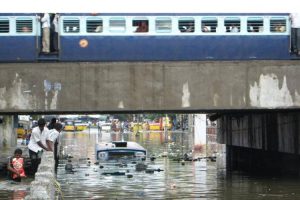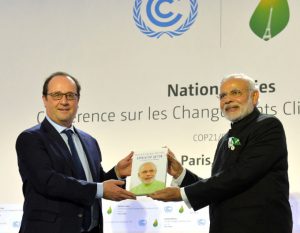Majuli has several claims to fame – a large riverine island, the seat of Neo-Vaishnavite culture and home to the unique legacy of hand-beaten pottery made from the glutinous clay found near the banks of the Brahmaputra. But that century-old pottery culture, the only cottage industry of the island vying for a UNESCO World Heritage tag, could soon disappear, much like the island itself that has been reduced to less than half as the river steadily erodes its landmass.
Over the decades, the island in northeast India’s Assam state that was once touted as the largest river island in the world has shrunk from 1,250 square kilometres to 420 square kilometres due to erosion. Every year, when the river swells up during the monsoons, the water eats away the land. While people in the affected villages move to different locations inside the island, those in Salmora, where most of the potter community lives, don’t have the option. Ironically, it’s their very lifeline, the river, and its eroding powers that is threatening not just their homes but also their art.
Also watch: Majuli – disappearing Brahmaputra island
Archaeologists say Majuli’s pottery offers a missing link between the Indus river valley civilizations of Mohenjodaro and Harappan during which the pottery industry flourished. Though 5,000 people are now involved in the cottage industry, which is different from the way clay pots are made elsewhere, a unique feature of pottery making in Majuli is that only women are involved in the crafting process.

“We don’t use any machine to make the pots. We beat the clay with our hands to give the pots their shape,” says 55-year-old Duhida Bharali, who lives in Salmora in southeast Majuli and has been involved in this craft for the last 30 years.
The glutinous clay required is found near the river banks. The potters dig a 60-70 feet deep pit on the bank and then collect the ‘Kumar mati’ or potters’ earth.
“This potters’ earth is then transported back to our homes where it is further mixed with water and left to stand for a day. Women plough the soil dough with their feet. It is then mixed with sand for the correct texture,” says Boroon Kalita, another resident of Salmora.

The entire process for making a batch of 50-60 vases takes about four days. The final shape is given by the women who beat it with their hands. The vessels are baked in driftwood-fired kilns.
Blame the potters?
The problem lies in the retrieval of the raw material, the potters’ earth, from the banks. According to experts of the Brahmaputra Board, the government organization which has been involved in anti-erosion projects on the island since 2004, the digging of pits for clay soil makes the river bank vulnerable to erosion by the river.
“When the potters dig pits that deep, the actual, strong layer of the soil is taken away and all that remains, mostly, is the sandy layer. The river water then fills those pits and it becomes very easy for erosion to take place,” K K. Bhagawati of the Brahmaputra Board told thethirdpole.net.
Villagers in Salmora say the district administration has restricted them from digging on the banks for the last two years. This has affecting their livelihood.
“How can we make the pots if we don’t have the potters’ earth? No other soil is suitable for the craft that we are adept in. No other soil is as sticky and glutinous,” says Monmi Bora.
Boroon adds that they tried working with the earth dug from the interior parts of the island on the advice of outsiders but the results have not been satisfactory. “The earth dug from inside the island, we call it Ludwa mati, is black in colour and the pots that are made of it break easily.”

Although some families continue to dig for the earth a little distance away from the banks, the numbers have dropped considerably since the restriction has been imposed. “Earlier, if we managed to make 1,000 pots, now we manage to make about 600. This has affected our household income… not that we made much anyway,” Duhida says.
The pots are of different sizes – the smallest size, the Tekeli, is sold for Rs.10 (US$0.15) in the market and the biggest, Bhabuki, goes for about Rs.100-150 (US$ 1.5-2.5).
“There is a lot of effort involved, right from gathering the soil, to making the pots, and then transporting them through the ferry across the Brahmaputra to different parts of Assam. But more importantly, it’s an art that is passed down families and generations; we don’t know any other means of earning a living,” Munindra Bora, another villager added.
The villagers also challenge the claims that their craft is leading to erosion of their land.
“If our digging caused erosion, why are other parts of Majuli, where the potters don’t dig, getting eroded?” questions Boroon.
Bhagawati admits that the potters’ digging is not the only factor contributing to erosion, although it is one of the many.
Even as they look on helplessly towards alternate means of livelihood, the annual monsoon brings havoc to Salmora, like in many other villages. This year the floods, which came twice, has been especially devastating. The boulders and geo bags which are meant to contain erosion haven’t been of much help.
“We have stopped digging for almost two years now and have lost our means of livelihood. The river has started taking away our homes, our land, and our fields. We are left with nothing. A portion of the spur has sunk this time…it’s of no use,” lamented Aroon Gogoi. A boulder spur is an embankment which runs into the river vertically from the bank to deflect the flow of the Brahmaputra away from the bank and thus contain erosion.
These measures have, however, not provided long term solutions and are more of “temporary relief”.
The officials in the meanwhile also blame the government for delay in release of funds for further work to take place. Although the Brahmaputra Board, which was set up with the main aim of containing bank erosion, says that the amount of landmass lost after they begun work has lessened, there is still a long way to go.
The potters’ community, for one, is not sure if their art will survive. Many families are thinking of moving something else and some have have already started menial work. “Many potters have turned daily wage earners; they have turned masons or build boats. In my home, only I am involved in making pots, my children are not interested. If the raw material is not there, how will we make anything?” Duhida asks.
Residents feel the administration should guide them towards alternate means of livelihood. Ideas have also been floated on introducing them to different forms of pottery, like using terracotta. But nothing concrete has been done as yet.
And until it is, the lives of Majuli’s potters are just as fragile as the pots they carve.






